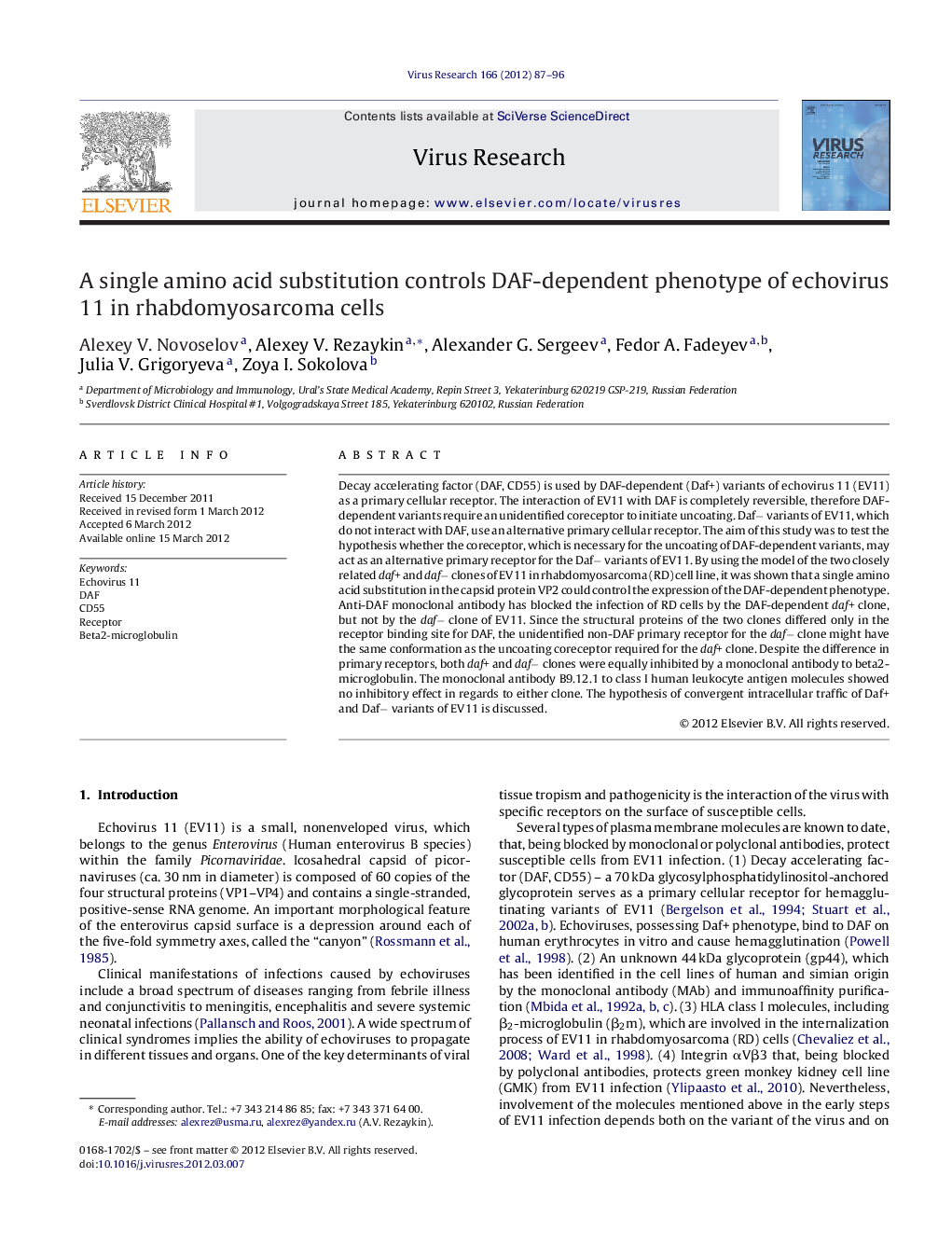| Article ID | Journal | Published Year | Pages | File Type |
|---|---|---|---|---|
| 3428720 | Virus Research | 2012 | 10 Pages |
Decay accelerating factor (DAF, CD55) is used by DAF-dependent (Daf+) variants of echovirus 11 (EV11) as a primary cellular receptor. The interaction of EV11 with DAF is completely reversible, therefore DAF-dependent variants require an unidentified coreceptor to initiate uncoating. Daf− variants of EV11, which do not interact with DAF, use an alternative primary cellular receptor. The aim of this study was to test the hypothesis whether the coreceptor, which is necessary for the uncoating of DAF-dependent variants, may act as an alternative primary receptor for the Daf− variants of EV11. By using the model of the two closely related daf+ and daf− clones of EV11 in rhabdomyosarcoma (RD) cell line, it was shown that a single amino acid substitution in the capsid protein VP2 could control the expression of the DAF-dependent phenotype. Anti-DAF monoclonal antibody has blocked the infection of RD cells by the DAF-dependent daf+ clone, but not by the daf− clone of EV11. Since the structural proteins of the two clones differed only in the receptor binding site for DAF, the unidentified non-DAF primary receptor for the daf− clone might have the same conformation as the uncoating coreceptor required for the daf+ clone. Despite the difference in primary receptors, both daf+ and daf− clones were equally inhibited by a monoclonal antibody to beta2-microglobulin. The monoclonal antibody B9.12.1 to class I human leukocyte antigen molecules showed no inhibitory effect in regards to either clone. The hypothesis of convergent intracellular traffic of Daf+ and Daf− variants of EV11 is discussed.
► A single amino acid substitution controls the usage of DAF receptor by echovirus 11. ► Antibody to beta2-microglobulin inhibits echovirus 11 daf+ and daf− clones. ► Daf+ variants of echovirus 11 are positively selected in the RD cell line.
